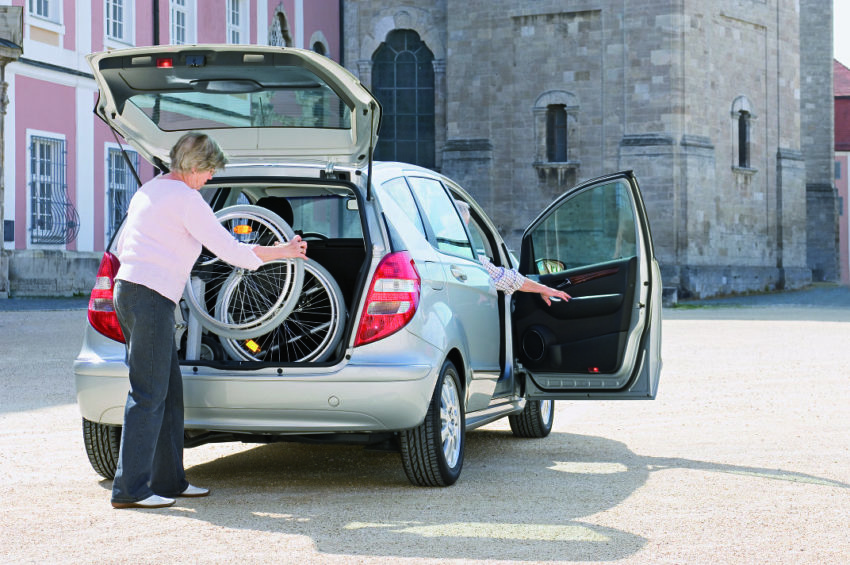Many people believe that adapting their cars for wheelchair users will be an expensive and time-consuming process, but this isn’t always true. Wheelchair vehicles can also be affordable.
With the right advice, and we aim to provide just that, adapting your vehicle to be accessible can be a relatively simple process, with the amazing reward of having a fully inclusive vehicle at the end of the journey. Read our little guide to find out how you can adapt your vehicle for a disabled loved one. Or yourself, for that matter.
Understanding requirements for wheelchair vehicles
Firstly, and most importantly, in order to adapt your vehicle effectively and successfully, you will need to know exactly what are the needs of the person you are adapting the vehicle for. Two people with cerebral palsy, for example, can have two very different requirements, let alone two people with two different types of disability. Is the person you are adapting the vehicle for able to transfer onto a seat independently? Do they have enough upper body strength to fasten their own seatbelt? Will they need to stay in their wheelchair during car journeys? If they do, are they so tall that they can only ‘fit’ in a van or similarly high vehicle? Do they need someone to sit beside them, for support and to help them with their balance?
These are just a few very important questions, but discussing and figuring out the answers to them will go a long way towards you having a better idea of the correct adaptations for the vehicle.
Understanding options for wheelchair vehicles
There are amazing accessible transport and travel products coming onto the market all the time. Look out for them. They might be designed for the specific impairment that the wheelchair user has, and will, therefore, be able to hugely change their ability to transfer, balance, fasten a seatbelt or sit comfortably in the car. Certain vehicle manufacturers offer some accessibility and mobility options ‘out of the factory’, so, if your vehicle adaptation journey starts with choosing a vehicle to buy, be sure to know what’s available.
Choosing the vehicle that best suits the wheelchair user’s specific requirements and needs will take you a long way towards an effective and successful vehicle adaptation. Another option worth considering is buying an already adapted, used vehicle – someone may have already bought and adapted a vehicle that’s suitable for you or your loved one, and they don’t need it anymore. Buying such a vehicle may be a cheaper and largely hassle-free solution, but in that case, make sure you are buying a vehicle that truly does meet your needs. Good enough is not always good enough, and may end up not being cheaper and hassle-free after all.
Knowing your budget
Depending on where you live, you may be able to get financial support for making your vehicle accessible. Visit your local government website and find out what help and support you are eligible for, or discuss your options with the company that will be in charge of adapting your vehicle, as they should be well aware of any benefits you may be entitled to. If you’re unable to get financial support for your accessible vehicle adaptations, there are ways that you can successfully adapt your vehicle and make it more accessible for a fraction of the price.
For example, a seat that electronically turns in the car can be very expensive, but a swivel cushion does a very similar thing and can be bought for as little as £10. It may take some time, but it’s worth looking for cheaper products that can help disabled people and make their journeys easier, whilst also enabling you to save some money.
Finding an adaptations manufacturer for wheelchair vehicles
The most important part of your journey will probably be to find a company that can discuss your adaptation needs with you and install the correct ones for you, and, as we stated above, even help you with your budget. Try searching for ‘accessible vehicle adaptation companies’ on the internet, consult your peers and inquire in your local disability organisations. Then, when you think you have enough information, give a few of them a call or email them. Adapting your vehicle can be quite a daunting process, so it’s important that you feel comfortable working with the company that will be in charge of it. This is an important decision and don’t rush it.
Enjoying the result
The final advice we can give you – have fun once the adaptations are made! An accessible vehicle can have a massively positive impact on a disabled person’s life and make experiences all the richer when the panic and stress of using unaccessible transport – be it private or public – is lifted. Whether you’ll use your new car for your daily commutes, your holiday road trips, or anything in between, you’ll enjoy the new simplicity and easiness of the transfers – if they’ll be necessary at all – and all the places that have eluded you before. We hope this article has helped you to feel a little more confident about the accessible vehicle adaptation process, and we wish you luck in your journey!
